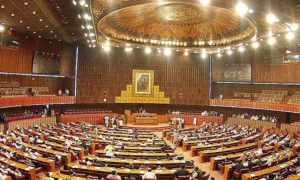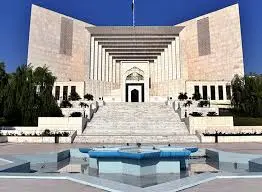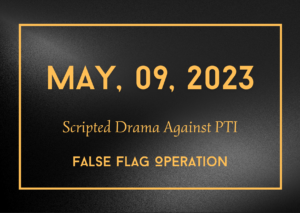Pakistan’s Political Landscape: Power Dynamics & Judicial Reforms

Amidst the vibrant setting of South Asia, Pakistan finds itself amidst notable political transformations. The nation’s governance framework is currently under intense scrutiny as judicial reforms take center stage. This blog entry delves into the shifting political terrain of Pakistan, shedding light on the recent drive for judicial modifications and their far-reaching consequences.
Political Landscape in Pakistan Challenges and Power Dynamics
Pakistan’s political landscape weaves an intricate tapestry of power struggles and alliances. Spearheaded by a coalition of parties, the government is advocating for substantial reforms within the judicial system. Nonetheless, these endeavors have ignited debates and apprehensions among diverse political factions and the populace.
The complexities lie in the intricate power dynamics between political dynasties, military influence, and rising political figures. Ongoing tensions between Nawaz Sharif’s party and the military only deepen the intricacy of the situation.
Government Push for Judicial Reforms
The current administration is advocating for substantial changes in the judicial structure. They aim to appoint judges who align with their agendas. However, this raises questions about the independence of the judiciary.
The government’s efforts to reform the judiciary are seen as attempts to consolidate power. Critics argue that these changes could legitimize administrations with minimal electoral support. The tension between PTI and ruling political players remains palpable.
Motivations and Concerns
One major concern is the government’s desire to appoint compliant judges. This move could protect questionable mandates and policies. However, it has sparked fears of establishing a constitutional dictatorship.
The tension between Nawaz Sharif and military leadership adds another layer of complexity. Meanwhile, Imran Khan’s potential return to power poses a threat to the establishment. His leadership style and policies may disrupt the current political equilibrium.
Proposed Changes
The proposed reforms include extending the retirement age for Supreme Court judges. Currently at 65, they propose to extend it further. Similarly, High Court judges’ retirement age might increase from 62 to 65 years.
There is also a proposal to raise the number of Supreme Court judges. Increasing the count to 23 aims to influence the Chief Justice selection process. These changes have far-reaching implications for Pakistan’s legal system.
Implications
These proposed reforms signal an emerging constitutional dictatorship. Systematic attacks on judges have already started. Concerns about undermining judiciary independence are growing.
The potential to form favorable benches for government interests is worrisome. Such moves could distort justice delivery. Ensuring fair and impartial judicial proceedings is crucial for democracy.
Supreme Court Dynamics

The Supreme Court’s current composition plays a vital role in these reforms. Most judges reportedly support Justice Mansoor Ali Shah. Only two judges are said to back Justice Qazi Faez Isa.
The government fears that Justice Mansoor may reopen Election Commission cases. This could have significant political consequences. The judicial dynamics are pivotal in shaping Pakistan’s future.
Retirement Age Controversy
Justice Qazi Faez Isa’s nearing retirement age is a contentious issue. Extending his tenure would also benefit Justice Mansoor Ali Shah. This presents a dilemma for the government’s reform agenda.
The controversy surrounding retirement ages highlights deeper issues. It reflects the underlying power struggles within the judiciary. Balancing continuity and change in leadership is critical.
Chief Justice Appointment
The selection of the next Chief Justice has become highly politicized. The government promises a timely notification for the new Chief Justice. However, behind-the-scenes efforts to influence selection are suspected.
The Chief Justice’s role is integral to Pakistan’s judiciary. Ensuring transparency and merit in the selection process is vital. Political meddling risks compromising the judiciary’s credibility.
May 9 Events and Legal Proceedings

The government has faced criticism for delays in verdicts on May 9 events. Accusations of courts obstructing progress are common. Claims that justice is not being served persist.
Challenges in prosecution stem from weak evidence presentation. Courts often grant bail due to a lack of proof. Key figures like Imran Khan face unconvincing arguments from prosecution.
Impact on Political Narrative
These judicial challenges undermine the government’s narrative. Questions about the strength of cases against opposition figures arise. The May 9 events remain a contentious political issue.
A robust legal framework is essential for political stability. Ensuring fair and transparent legal proceedings reinforces governance. Strengthening the judiciary’s role in political discourse is crucial.
Political Parties and Leadership

The Pakistan Muslim League-Nawaz (PML-N) faces uncertainties. Nawaz Sharif’s political future remains unpredictable. Speculation about his return to London persists.
The Pakistan Tehreek-e-Insaf (PTI) continues to wield influence. Imran Khan faces numerous legal challenges yet retains popular support. His leadership style resonates with millions of Pakistanis.
Criticism of political dynasties like the Sharif and Bhutto families is widespread. Questions about their contributions to Pakistan’s progress linger. Allegations of corruption further fuel public discontent.
Civil-Military Relations
Historically, Pakistan’s military has played a significant political role. Allegations of military involvement in political removals abound. The military’s influence on political dynamics should be stopped.
Current dynamics between the military and political entities are tense. The establishment fears repercussions if Imran Khan gains power. The conflict has moved beyond power struggles to existential fears.
Potential scenarios range from a national government to a technocrat setup. Direct military rule seems improbable due to economic constraints. Resolving key appointments is vital for political stability.
Media and Dissent

Critics of political dynasties and establishments involvement face suppression. Dissenting voices often encounter forced disappearances or worse. Allegations of joint efforts by government and establishment to silence critics persist.
Media narratives can play a crucial role in shaping public opinion. But almost all channels align with the government for their interests. The government’s struggle to control over media narratives is intense.
Economic Challenges
Pakistan’s economic challenges impact governance and stability. An empty national treasury limits options for civilian and military leadership. Financial constraints shape political strategies and possibilities.
Economic challenges significantly impact political stability. Limitations on policy implementation hinder governance effectiveness. External financial pressures increase vulnerability.
Regional and Foreign Policy Issues
Relations with India remain contentious. Controversy surrounds statements about inviting Indian PM Modi. Contradictory accusations within political parties add complexity.
Kashmir and Balochistan issues complicate foreign policy decisions. Kashmir remains central to Pakistan’s political discourse. Regional security concerns continue to influence political dynamics.
Judiciary’s Role in Politics
Concerns about potential reopening of election tribunal cases persist. This could threaten the current government’s legitimacy. Many Pakistanis support moves to ensure electoral fairness.
Courts often find themselves entangled in political conflicts. Pressure on judges raises questions about judicial independence. The judiciary’s role in political disputes remains controversial.
Democratic Challenges
Frequent interventions by non-elected institutions undermine democracy. Political parties accuse each other of subverting democratic norms. Calls for internal party democracy and new leadership are growing.
Allegations of rigging and manipulation during elections are common. The role of election tribunals is often disputed. Ensuring election integrity is crucial for democratic processes.
Corruption and Accountability
High-profile cases like the Avenfield Apartments ownership remain unresolved. Concerns about elite corruption persist. Public frustration with perceived impunity for political elites is palpable.
The effectiveness of the legal system is under scrutiny. Delays in high-profile cases fuel public frustration. Ensuring accountability for powerful figures is essential.
Future Scenarios
Potential governance models include a national government or technocrat setup. Debates about technocrats’ role in resolving political deadlocks continue. Concerns about democratic legitimacy of non-elected setups are valid.
Electoral prospects remain uncertain. Imran Khan’s potential victory concerns the establishment. The political landscape continues to evolve amidst power struggles.
Conclusion
Pakistan’s political landscape is marked by complex power dynamics and ongoing reforms. Judicial changes, civil-military relations, and regional tensions shape the nation’s governance. Navigating these challenges requires transparency, accountability, and collaboration.
For further insights into Pakistan’s political dynamics, stay tuned to reputable sources. Understanding the intricacies of governance is crucial for informed engagement. Together, we can contribute to a more stable and prosperous Pakistan.
